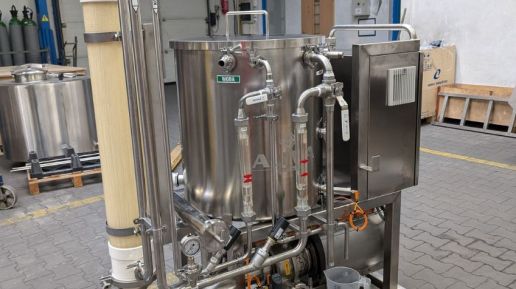
dr Piotr Wasyluk
Jak sprzedawać produkty mleczne pokoleniu Z? O roli trendów w strategiach marketingowych
Streszczenie
Artykuł omawia wyzwania, przed którymi stoi branża mleczarska w obliczu zmieniających się preferencji konsumentów, zwłaszcza młodszych generacji. Młodzi konsumenci, zwani No Milk Generation, coraz częściej wybierają produkty roślinne i zwracają uwagę na aspekty etyczne oraz wpływ produktów na środowisko. W związku z tym, branża mleczarska musi dostosować swoje strategie marketingowe, aby lepiej odpowiadać na potrzeby i oczekiwania nowych grup klientów, w szczególności pokolenia Z, które ma ogromny potencjał rynkowy. Jedną ze skutecznych strategii marketingowych może okazać się wykorzystanie trendów. Jeśli branża mleczarska nauczy się wykorzystywać trendy i efektywnie komunikować swoje wartości, ma szansę zainteresować „Zetki” swoimi produktami i usługami, a także budować z nimi trwałe relacje.
Słowa kluczowe: pokolenie Z, marketing, trendy, marketing branży mleczarskiejArtykuł omawia wyzwania, przed którymi stoi branża mleczarska w obliczu zmieniających się preferencji konsumentów, zwłaszcza młodszych generacji. Młodzi konsumenci, zwani No Milk Generation, coraz częściej wybierają produkty roślinne i zwracają uwagę na aspekty etyczne oraz wpływ produktów na środowisko. W związku z tym, branża mleczarska musi dostosować swoje strategie marketingowe, aby lepiej odpowiadać na potrzeby i oczekiwania nowych grup klientów, w szczególności pokolenia Z, które ma ogromny potencjał rynkowy. Jedną ze skutecznych strategii marketingowych może okazać się wykorzystanie trendów. Jeśli branża mleczarska nauczy się wykorzystywać trendy i efektywnie komunikować swoje wartości, ma szansę zainteresować „Zetki” swoimi produktami i usługami, a także budować z nimi trwałe relacje.
How to Sell Dairy Products to Generation Z? The Role of Trends in Marketing Strategies
Abstract
The article discusses the challenges faced by the dairy industry in light of changing consumer preferences, especially among younger generations. Young consumers, often referred to as the „no-milk generation," are increasingly choosing plant-based products and paying attention to ethical aspects and the environmental impact of products. As a result, the dairy industry needs to adapt its marketing strategies to better meet the needs and expectations of new customer groups, particularly Generation Z, which has significant market potential. One effective marketing strategy could be leveraging trends. If the dairy industry learns to harness trends and effectively communicate its values, it has the potential to engage Generation Z with its products and services and build lasting relationships with them.
Keywords: generation Z, marketing, trends, dairy industry marketing
Cały artykuł można przeczytać tutaj
dr inż. Krzysztof Bohdziewicz, mgr inż. arch. Adrianna Iglińska
Tyrotarichus* – ser z dodatkami
*Tyrotarichus – łac. ser z robaczkami (za Markiem Tulliuszem Cyceronem) [17]
Streszczenie
W ostatnim czasie nasila się, wzbudzająca wiele emocji, dyskusja nad dopuszczeniem spożycia owadów na obszarze Unii Europejskiej. Ale temat kulinarnego wykorzystania tych nieoczywistych źródeł pożywienia nie jest aż taki nowy. W polskojęzycznej literaturze od blisko pięciu wieków można wskazać na zapisy podejmujące to zagadnienie. Można nader często natknąć się na fragmenty związane z występowaniem insektów także w serach. Niektóre zapisy wychwalają takie przypadki, jednak zdecydowana większość traktuje je jako wady sera i uważa za to jako obecność szkodników.
Słowa kluczowe: sery, owady, szkodniki serów, nowa żywność
Tyrotarichus* – Cheese with Additives
Abstract
Recently, the discussion on allowing insects to be eaten in the European Union has been intensifying, arousing a lot of emotions. But the topic of culinary use of these non-obvious food sources is not so new. In Polish-language literature for nearly five centuries, it is possible to point to records that take up this issue. You can very often come across fragments related to the occurrence of insects in cheese. Some records praise such cases, but the vast majority of as a defect of cheese and considers it the presence of pests.
Keywords: cheese, insects, cheese pests, novel food
em. prof. dr hab. inż. Stefan S. Smoczyński
Erytrytol – naturalna substancja słodząca z grupy polioli – potencjalnie szkodliwy chemiczny składnik żywności czy również produktów mleczarskich?
Streszczenie
Celem opracowania jest przedstawienie coraz bardziej rozpoznanej, naturalnej substancji słodzącej – erytrytolu, należącej do grupy alkoholi wielowodorotlenowych, nazywanych poliolami. Związek ten dopuszczony został jako E 968 do żywności. Erytrytol jest obecny w niewielkich ilościach w naturalnych surowcach, w owocach i produktach fermentowanych. Występuje w arbuzach, gruszkach, winogronach, grzybach, serach dojrzewających, winie, piwie, sosie sojowym na poziomie do 0,13%. Omówiono poliole jako związki, stanowią alternatywę dla cukru i syropu glukozowo-fruktozowego. Podkreślono, że poliole mogą być stosowane przez diabetyków oraz osoby na diecie niskokalorycznej, ponieważ dostarczają mniej kalorii i mają niższy indeks glikemiczny. Poliole nie powodują próchnicy i nie są wchłaniane i metabolizowane w organizmie człowieka oraz charakteryzują się mniejszą kalorycznością, wykazują wiele korzystnych właściwości. Poliolem, wykazującym najwięcej zdrowotnych właściwości, jest ksylitol. Omówiono warunki stosowania, podział, kwestie dotyczące bezpieczeństwa spożycia, intensywności słodzenia, etykietowania produktów, do których zostały dodane oraz podatku cukrowego. Wspomniano o naturalnej zawartości polioli w żywności oraz ich wpływie na zdrowie. Są to substancje dobrze przebadane i bezpieczne. Mają działanie prebiotyczne, ich wartość energetyczna, indeks insulinowy oraz glikemiczny są niższe w odniesieniu do sacharozy. W podsumowaniu przedstawiono prawne regulacje dotyczące środków spożywczych, w których, i na jakich warunkach można stosować poliole i inne chemiczne substancje słodzące.
Słowa kluczowe: poliole, występowanie, zamienniki cukru, zasady stosowania, rodzaje, zawartość w żywności, szkodliwość, wpływ na zdrowie, przepisy prawne.
Erythritol – a Natural Sweetener from the Polyol Group – a Potentially Harmful Chemical Ingredient of Foodstuffs and Dairy Products?
Abstract
This study aims to present the increasingly recognised natural sweetener – erythritol, belonging to the multi-hydroxy-alcohol group known as polyols. This compound has been approved as food additive E 968. Erythritol is found in small quantities in natural raw materials, fruits and fermented products. It is present in watermelons, pears, grapes, mushrooms, ripened cheeses, wine, beer, and soy sauce at levels up to 0.13%. Polyols are discussed as compounds offering an alternative to sugar and glucose-fructose syrup. It is emphasised that polyols can be used by diabetics and people following a low-calorie diet, as they provide fewer calories and have a lower glycaemic index. Polyols do not cause caries and are not absorbed or metabolised in the human body. They are lower in calories and exhibit many beneficial properties. The polyol that exhibits the most healthful properties is xylitol. The study discusses the principles for use, classification, consumption safety issues, intensity of sweetening, labelling of products to which they are added, and the sweetened beverage tax. It also mentions the natural polyol content of foods and the health effects of polyols. These substances are well-researched and safe. They have prebiotic effects, and their energy value, insulin index and glycaemic index are lower than those of sucrose. The summary outlines regulations for foodstuffs and the conditions under which polyols and other sweeteners can be used.
Keywords: polyols, occurrence, sugar substitutes, principles of use, types, content in foods, harmfulness, health effects, legislation
mgr inż. Patrycja Chociej, dr inż. Elżbieta Haponiuk
Wpływ temperatury na właściwości lepkosprężyste wybranych serków topionych
Streszczenie
W pracy przeprowadzono charakterystykę właściwości lepkosprężystych wybranych serków topionych. Materiał do badań stanowiły handlowe serki topione zakupione w supermarkecie takie jak: kremowy ze śmietanką firmy A oraz wysokobiałkowy serek topiony firmy B. Badania przeprowadzono w trybie oscylacyjnym stosując stałą częstotliwość i zmienną amplitudę, które wynosiły odpowiednio: odkształcenie styczne 0,01-100%, częstotliwość 10 Hz, używając układu pomiarowego płytka- stożek CP50-1 w temperaturach 4°C ± 0,1°C, 10°C ± 0,1°C, 20°C ± 0,1°C, 30°C ± 0,1°C, 40°C ± 0,1°C oraz 50°C ± 0,1°C.
Stwierdzono, że moduły sprężystości i stratności malały względem temperatury poprzez różnice w stężeniu frakcji białkowej powodując niszczenie struktury i zanik cech sprężystych. Temperatura w każdym badanym przypadku ma wpływ na właściwości reologiczne serka topionego. Wraz ze wzrostem temperatury malały moduły stratności i sprężystości, a także lepkość zespolona. Najwyższe wartości modułów stratności G” i sprężystości G’ uzyskano w temperaturach 10°C ± 0,1°C oraz 4°C ± 0,1°C odpowiednio dla sera topionego A oraz B, zaś najniższe w temperaturze 50°C ± 0,1°C dla obydwu serów topionych.
Słowa kluczowe: temperatura, lepkosprężystość, ser topiony, moduł sprężystości, moduł stratności
Effect of Temperature on the Viscoelastic Properties of Selected Processed Cheeses
Abstract
The characteristics of the viscoelastic properties of selected processed cheeses were determined. The research material consisted of commercial processed cheese purchased in a Supermarket, such as processed cheese with cream from A and high protein processed cheese from B. The tests were carried out in the oscillatory mode using constant frequency and variable amplitude, which were respectively: tangential strain 0.01-100%, frequency 10 Hz, using the CP50-1 plate-cone measuring system at temperatures of 4°C ± 0.1°C, 10°C ± 0.1°C, 20°C ± 0.1°C, 30°C ± 0.1°C, 40°C ± 0.1°C and 50°C ± 0.1°C.
It was discovered that the modulus of elasticity and loss decreased with respect to temperature due to differences in the concentration of the protein fraction, causing the destruction of the structure and the disappearance of elastic properties. The temperature in each tested case affects the rheological properties of the processed cheese. Loss modulus and elastic modulus as well as complex viscosity decreased with increasing temperature. The highest values of loss modulus G" and elasticity G' were obtained at the temperatures of 10°C ± 0.1°C and 4°C ± 0.1°C respectively for A and B processed cheese, and the lowest at 50°C ± 0.1°C for both processed cheeses.
Keywords: temperature, viscoelasticity, processed cheese, elastic modulus, loss modulus
mgr inż. Milena Wilga
Cheddar – wyjątkowy ser
Streszczenie
Cheddar jest serem popularnym w Wielkiej Brytanii. W Polsce również ma swoich zwolenników, którzy zachwycają się jego pikantnym, lekko orzechowym smakiem. W artykule przedstawiono informacje dotyczące sera cheddar. Opisano historię jego pochodzenia, proces technologiczny z uwzględnieniem procesu cheddaryzacji oraz właściwości zdrowotne. Zwrócono uwagę na bogactwo składników wchodzących w jego skład, m.in. bioaktywnych peptydów, witamin i selenu.
Słowa kluczowe: cheddar, cheddaryzacja, bioaktywne peptydy, witaminy A, D, E, K; selen
Cheddar – a Special Cheese
Abstract
Cheddar is a cheese popular in Great Britain. It also has its supporters in Poland, who admire its spicy, slightly nutty taste. The article presents information about cheddar cheese. The history of its origin, the technological process including the cheddaring, and its health properties are described. Attention was paid to the wealth of ingredients included in its composition, including: bioactive peptides, vitamins and selenium.
Keywords: cheddar, cheddaring, bioactive peptides, vitamin A,D,E,K; selenium
Spis treści


















